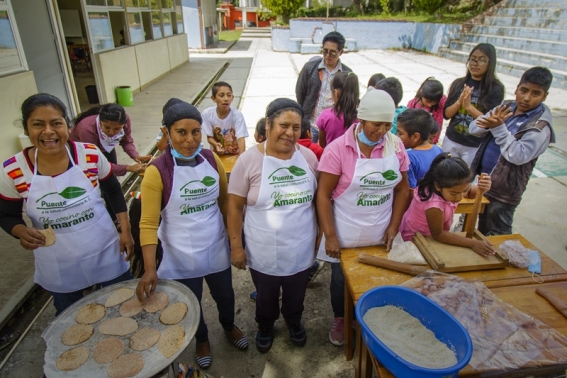Terms to Understand Sustainable Agriculture
1. Sustainable Agriculture
The type of agriculture that thinks about the consumer’s well-being throughout the entire food chain, in the short, medium, and long term. It guarantees fair income, environmental health and social and economic equity.
2. Agroecology
A scientific discipline, a set of practices, and a social movement. Looking for sustainable systems that optimize and stabilize crops, it considers multifunctional agricultural approaches, promotes social justice, nurtures identity and culture and reinforces the economic viability of rural areas.
3. Food Sovereignty
The ability of communities to produce and consume their own food with their own political, social, cultural, and environmental rules. It is only possible through agroecology, which integrates traditional knowledge with agronomy.
4. Organic Fertilizers
Substances that contain wastes of animal, vegetable or mixed origin, which are added to the soil in order to improve their nutrition. Some examples are biol and vermi-compost, which are the controlled decomposition of organic matter that helps nourish the soil with minerals and other components necessary for good harvests in sustainable agriculture.
5. Polycultivation
A type of agriculture that uses multiple crops on the same plot. An example is the milpa that integrates squash, beans, corn, fruit trees, chelites, chilies and more on the same land. It is positive for crop diversification and soil nutrition. It can be used on a larger scale if traditional knowledge is combined with practice, experience and innovation for agricultural management.
6. Social Enterprises
Autonomous and dynamic organizations that are formed with a group of partners (who may or may not be family members) with initiatives, interests and skills in common; that is to say, a business model that prioritizes community participation oriented to the economic growth of all the members.
7. Biodiversity
The variety of life: it covers all the species of plants, animals, fungi and microorganisms that inhabit the planet. It also includes ecological and evolutionary processes at the genetic, species, and landscape levels.
8. Responsible Consumption
When consumers take into account the social, environmental and ethical sphere when choosing a product or service and demand transparency and traceability in the processes.
9. Smallholder Farmer Technology
The knowledge and development of methods, procedures, tools, techniques and equipment of a given community. It has social, collective and environmental preservation bases with natural biological cycles and a holistic worldview of the environment. It develops its rules and methods independently from those of large-scale agribusiness.
10. Social Economy
Economic development that is based on community, democracy, trust schemes, social ownership of resources, equitable distribution of benefits among its members and social commitment in favor of all members. For a social economy to be successful, cohesion is very important.
What Does Sustainable Agriculture Implement?
The challenge for sustainability, in Karina’s words, is to generate knowledge and access other practices that complement the traditional ones, that contribute and innovate with appropriate technologies. She adds that sometimes this type of knowledge can be romanticized and remain on small scales of backyard and family production. But she adds that this may be scaled to hectares and larger productions (up to 14 or 15 hectares, if applicable).
Are the terms “agro-ecological” and “organic” different?
The challenge for sustainability, in Karina’s words, is to generate knowledge and access other practices that complement the traditional ones, that contribute and innovate with appropriate technologies. She adds that sometimes this type of knowledge can be romanticized and remain on small scales of backyard and family production. But she adds that this may be scaled to hectares and larger productions (up to 14 or 15 hectares, if applicable).







